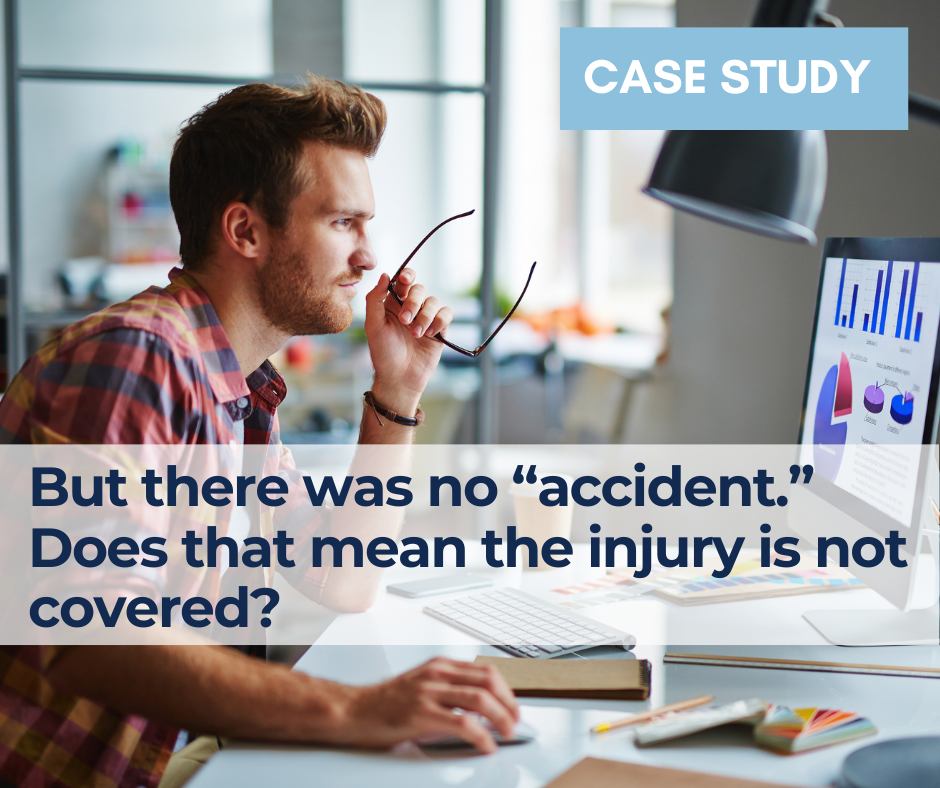
But there was no “accident.” Does that mean the injury is not covered?
So often, companies associate a work injury as being the result of an accident, an event external to the employee that occurs at a specific time and place. What happens when the injured worker describes the onset of pain after completing work tasks over a period of time, or perhaps a reaction after being exposed to something in the workplace? PartnerSource offers clients valuable insight by digging deeper to consider everything a client’s plan makes available to them.
The reaction from some decision makers is to deny the claim because there wasn’t a specific accident. In most benefit plans, however, cumulative trauma and occupational disease are covered injuries. Therefore, it is important to review the circumstances of the injury to determine if there is coverage under one of these other injury types.
Consider these two scenarios:
Scenario 1: An employee who performs heavy lifting while unloading trucks reports a back injury after working for the past year. In this example, he did not have a specific accident but he is essentially reporting a repetitive injury (cumulative trauma). In order to determine if this would be a covered Injury under the plan, you would determine the functions of his job and consider if a medical opinion is necessary to assess if it meets the definition of cumulative trauma.
Scenario 2: An employee reports she has developed a rash over the past week that has gotten worse. She believes this was a reaction to using a new cleaner while at work. The employee may not realize it, but she is reporting an occupational disease exposure. Initially, it may seem that this injury was reported late since the rash began a week prior. However, it is important to remember that the reporting timeframe for this type of injury is different than for an accident: Under most plans, an employee has up to 30 days from when they knew, or should have known, of the injury to report it (this timeframe may be shorter if medical treatment confirmed an occupational disease exposure). If the exposure is reported in a timely manner, a medical opinion as to causation of the condition may be necessary to ultimately determine if it is a covered injury.
PartnerSource advises that when evaluating coverage for an injury, it’s important to remember that the mechanism may be covered under cumulative trauma or occupational disease, if it is not an accident. Also remember that the reporting timeframe for those types of injuries are longer as the onset of the condition may not be immediate.
For more information on cumulative trauma and occupational disease, reach out to PartnerSource today.
